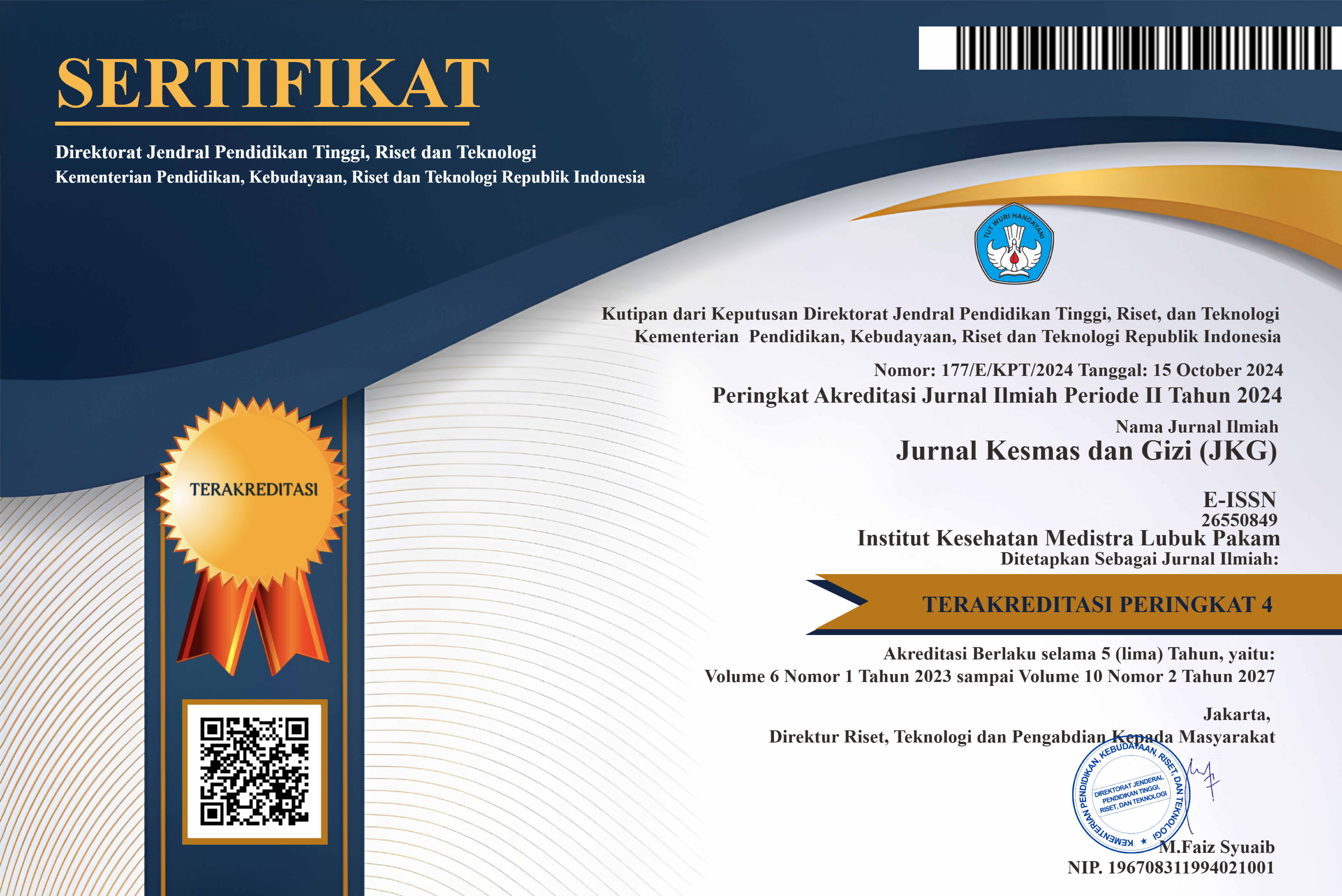KARAKTERISTIK PENDERITA YANG BERHUBUNGAN DENGAN KEJADIAN PEMBESARAN PROSTAT JINAK
DOI:
https://doi.org/10.35451/jkg.v1i2.121Keywords:
prostat, pembesaran prostat, urologiAbstract
Benign prostate enlargement is a global problem in older men. The risk of benign prostate enlargement is usually experienced by those in adulthood whose risk percentages vary. As a result, it also depends on how much the risk is suffered, only a small percentage of patients show clinical symptoms, which are associated with suppression of the urethra resulting in difficulty urinating or urinary retention. These two problems/complaints can be complicated by dilation to bladder hypertrophy, hydroureter, hydronephrosis, prostatitis, kidney infection, stones and infarction. This study used 100 sample people who examined themselves at the Urology Poly of the Second Level Hospital in the Kesdam I/BB Putri Hijau, Medan. The results of this study indicate that of the four characteristics analyzed, only two factors can provide a risk of benign prostate enlargement, namely age and family track record of patients with benign prostate enlargement. Two other factors, such as obesity and marital status do not provide a risk for benign prostate enlargement.
Downloads
References
Arditho, B. 2013. Pedoman Penatalaksanaan BPH di Indonesia. Indonesia Urological Assosiation. Available from: http://www.iaui.or.id/ast/file/bph.pdf
Kumar, V., Cotran, R.S., & Robbins, S., 2007. Buku Ajar Patologi Robbins, Vol 2. Jakarta: EGC.
Nasar, M I., Himawan, S., Marwanto, W., 2010. Buku Ajar Patologi II (Khusus) Edisi ke-1. Jakarta: CV. Sagung Seto.
Purnomo, B.B., 2011. Dasar – Dasar Urologi Edisi ketiga. Jakarta : CV Sagung Seto.
Amalia, R., 2007. Faktor-Faktor Resiko Terjaidnya Pembesaran Prostat Jinak. Universitas Diponegoro: Semarang
Singodimedjo, P., 2007. Urologi. Yogyakarta: Medika FK UGM.
Meigs JB., dkk. 2001. Risk factors for clinical benign prostatic hyperplasia in a community-based population of healthy aging men. Journal of Clinical Epidemiology, Vol. 54 (9), p. 935-944. URL: http://www.linkinhub-elsevier.com.
Hong J., dkk. 2006. Risk Factors for Benign Prostatic Hyperplasia in South Korean Men. Urologia Internationalis, 76:11-19. URL: http://www.content.karger.com.
Platz E.A., dkk. 1999. Alcohol Consumption, Cigarette Smoking, and Risk of Benign Prostatic Hyperplasia. American Journal of Epidemiology Vol. 149, No. 2: 106-115. URL: http:// www.aje.oxfordjournals.org.
Zucchetto A, dkk. 2005. History of weight and obesity through life and risk of benign prostatic hyperplasia. International Journal of Obesity, Vol. 29, 798–803. doi:10.1038/sj.ijo.0802979 URL: http://www.nature.com.
Hellstrom. 2004. Benign Prostatic Hyperplasia, Sexual Function and Evaluation of the Male Patient. Suplement 2. Vol. 104, (2). URL: http://www.jaoa.org.
Sutcliffe S, dkk. 2005. Sexually Transmitted Infections, Prostatitis, Ejaculation Frequency, and the Odds of Lower Urinary Tract Symptoms. Am. J. Epidemiol., Vol. 162 (9), p. 898-906. URL: http://www.aje.oxfordjournals.org.
Downloads
Published
Issue
Section
License
Copyright in each article is the property of the Author.



























